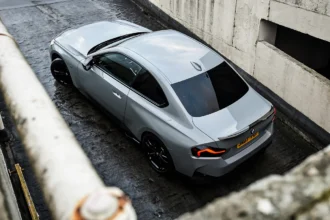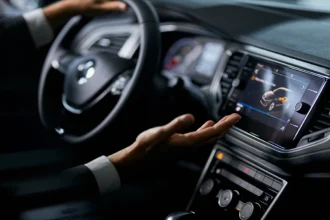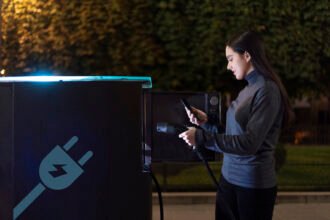In recent years, the automotive industry has witnessed remarkable advancements, particularly in the realm of technology. One of the most exciting innovations reshaping the driving experience is augmented reality (AR). This transformative technology is revolutionizing car displays, providing drivers with enhanced information, improved safety features, and an interactive interface that makes navigating the road easier than ever.
AR is redefining the way drivers interact with their vehicles, moving beyond traditional dashboards to create immersive displays that integrate real-time information with the surrounding environment. This article delves into how augmented reality is changing car displays, exploring its benefits, applications, and future potential in the automotive sector.
The Rise of Augmented Reality in the Automotive Industry

Augmented reality technology overlays digital information onto the real world, enhancing our perception of our surroundings. In the automotive context, AR is used to project crucial data directly onto the windshield or infotainment systems, allowing drivers to access navigation, speed, and other vital information without taking their eyes off the road.
Benefits of AR Displays in Cars
- Enhanced Navigation
AR displays provide drivers with intuitive navigation cues. Instead of merely relying on a map or GPS, drivers can see directional arrows overlaid on their real-time view, guiding them to their destination seamlessly. This not only reduces distractions but also improves overall navigation accuracy. - Improved Safety
By displaying critical information directly in the driver’s line of sight, AR can significantly enhance safety. For instance, if a vehicle approaches from the side, AR technology can highlight the danger, alerting the driver before they make a potentially hazardous maneuver. - Real-Time Data Visualization
AR allows for the visualization of real-time data, such as speed, fuel levels, and vehicle diagnostics. By keeping this information in the driver’s peripheral view, AR displays minimize the need to glance away from the road, enhancing situational awareness. - Customization and Personalization
AR systems can adapt to individual driver preferences, offering customizable displays that highlight the information most relevant to each user. This personalization makes driving more intuitive and user-friendly.
How AR Displays Work
AR displays in cars typically use a combination of hardware and software to function effectively. Key components include:
- Cameras and Sensors: Cameras capture the vehicle’s surroundings, while sensors monitor factors like speed and direction.
- Display Technology: Information is projected onto a transparent display or directly onto the windshield.
- Computer Vision Algorithms: These algorithms process data from cameras and sensors to accurately overlay information in real time.
Applications of AR in Automotive Displays
- Heads-Up Displays (HUDs)
HUDs are perhaps the most recognized application of AR in car displays. They project vital information, such as speed, navigation prompts, and warnings, directly onto the windshield. This allows drivers to maintain focus on the road ahead while still receiving important updates. - Parking Assistance
AR can also assist drivers during parking. By displaying guidelines or parking spot availability on the screen, drivers can maneuver into tight spaces more easily, reducing the chances of collisions or damage. - Maintenance Alerts
Advanced Augmented Reality systems can provide maintenance alerts that highlight specific vehicle issues, helping drivers understand what needs attention and where. For instance, if a tire is low on pressure, the AR system can highlight that specific tire and offer guidance on how to resolve the issue.
Future of AR Displays in Cars
As technology continues to advance, the future of Augmented Reality displays in cars looks promising. Key trends to watch for include:
- Integration with Smart City Infrastructure: Future AR systems may connect with smart city technologies, providing real-time updates on traffic conditions, road closures, and other urban challenges.
- Vehicle-to-Everything (V2X) Communication: AR technology will likely evolve to incorporate V2X communication, enabling vehicles to share information with each other and infrastructure. This could further enhance safety and navigation.
- Expanded AR Features: As more automakers invest in AR technology, we can expect to see innovative features such as virtual test drives, 3D mapping of routes, and even gaming integration for passengers.
Challenges and Considerations
While the benefits of Augmented Reality displays in cars are compelling, several challenges remain:
- Cost and Accessibility: The integration of AR technology can increase vehicle costs, potentially making it less accessible to a broader audience.
- User Training: Drivers may require training to fully utilize AR systems, which could be a barrier to adoption.
- Distraction Concerns: There is a risk that too much information presented in AR formats could distract drivers. Striking the right balance between useful data and maintaining focus is crucial.
FAQs
Q1: How do AR displays differ from traditional car displays?
A: AR displays overlay information on the driver’s real-world view, while traditional displays require drivers to look away from the road to access information.
Q2: Are AR displays safe to use while driving?
A: When designed correctly, AR displays can enhance safety by providing critical information without causing significant distractions. However, it is essential to ensure that they are not overly cluttered with information.
Q3: What is the future of AR in cars?
A: The future of AR in cars includes integration with smart city infrastructure, V2X communication, and expanding features that enhance navigation, safety, and user experience.
Conclusion
Augmented reality is undoubtedly changing the landscape of car displays, offering innovative solutions that enhance safety, navigation, and user experience. As the technology continues to evolve, we can expect even more sophisticated AR applications in vehicles, paving the way for a more intuitive and connected driving experience. By leveraging AR, automakers are not just keeping up with technological advancements; they are actively shaping the future of transportation in the USA and beyond.
Read More: 10 Car Maintenance Tips to Save Money
With the continued development of AR technology, we are witnessing the dawn of a new era in automotive design, one that prioritizes driver safety, efficiency, and an enriched user experience. The intersection of augmented reality and AR displays in cars USA marks a significant step forward in the quest for safer, smarter driving solutions.








